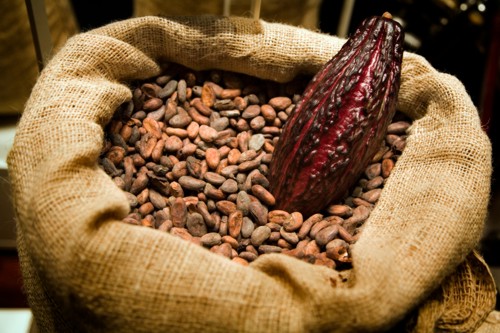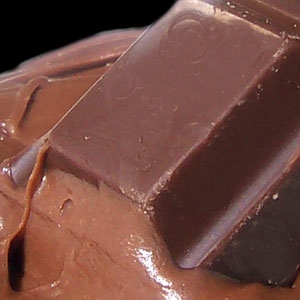We posted some time ago about an imminent spike in the price of chocolate. It was just a matter of time. Well… That time is now. The current financial throes of one major Chocolate company dramatically illustrate the severity of the ‘crisis’…
 Raw Cocoa Beans: As they come from the African, Central American
Raw Cocoa Beans: As they come from the African, Central American
and South America growers. Shown with a cocoa pod,
inside which the beans grow as seeds.
Industry bellwether
The Hershey Company is the oldest and largest Chocolate maker in the US. And as such, it’s a bellwether for the industry. So when its CEO tells shareholders and the media, in a quarterly earnings call, that revenues shrank more than 11 percent, year over year, in the 4th quarter of 2023, it’s a ‘DEFCON 4’ situation.
“Historic [high] cocoa prices are expected to limit earnings growth this year,” Michele Buck, President and CEO of the Hershey Company, said during a February earnings call. That statement, only a month and a half a go, looks, in retrospect, like a gross understatement.
At the beginning of this year, cocoa was trading at a relative high of just over (US)$4,200 per ton. And the price has been climbing ever since. In fact, it recently hit a new historic high of $5,874 on the New York commodities market. And Cocoa futures last week reached a historic high, trading at $8,940 per ton. That’s an indication of where commodities traders think day-to-day cocoa prices are headed.
What’s happening?
The bulk of the world’s cocoa is grown in 2 African countries, Ghana and Côte d’Ivoire, both on the continent’s Atlantic coast. An MSNBC story notes, “Severe El Niño-induced dry weather conditions, […] wildfires and an outbreak of the cacao swollen shoot virus have cut down cocoa supply. […] It appears that these dry weather conditions won’t be letting up anytime soon.”
Other reports indicate that the Ghana cocoa harvest is expected to be down by 40 percent this year, compared to previous-year averages. Aside from from the weather, smuggling and black market exports cheated the Ghanaian economy of an estimated $600 million last year.
On the positive side, Hershey execs told shareholders that end-of-year seasonal sales of chocolate products were up, relative to previous quarters. In plain English, that just means that many consumers did not shy away from at least some Holiday chocolate indulgences. In spite of higher prices and reduced product weights (shrinkflation) in traditional packages.
A tougher future
But the rocketing rise in cocoa prices probably can’t be countered by traditional strategy and tactics.The retail price of chocolate products in Europe and North America rose by 10 percent last year. And it’s expected to shoot up another 10 percent this year. In spite of industry countermeasures and creative retail marketing programs.
Hershey is reported ready to increase prices as part of its plan for 2024. “But according to Buck, the company is going to do everything it can before resorting to raising prices again, including cutting 5% of its global workforce.”
“While historic cocoa prices are expected to limit earnings growth this year,” Buck declared, “we believe our strong marketing plans, innovation and brand investments will drive top-line growth and meet consumers’ evolving needs.” That’s really just CEO-speak, designed to quell the qualms of investors.
My take
I suppose there are those folks out there who just say, ‘Okay…’ to higher chocolate prices. And sigh. They’d be members of the new middle class – defined by the Canadian and US governments as enjoying an average family income of $50,000 to $150,000 a year. Those making more than $150,000 – the ‘upper class’ – don’t care how pricey chocolate gets. If they want it, they buy it.
Chocolate company and retailer tactics to maintain chocolate sales this year can be expected to include the usual tricks and deceptions. Shrinkflation will be the easiest to implement. Less or smaller product in the same packages. Less chocolate and more cheap filler – rice crisps are the most common – in chocolate bars. More confections using cheap, non-chocolate centres and only a thin chocolate coating. Think: Kit Kat and Twix. The list goes on.
My prediction is that Hershey’s and the other chocolate giants will hit a wall in 2024. They’ll run out of ways to keep retail prices in the realm of affordability for the masses, and sales will suffer perilously. It’s time for the chocolate industry to start planning for a major move away from cocoa-based products to other snacks. Most have already diversified to some extent into salty snacks.
As I predicted about meat – particularly beef – Chocolate products will only survive as boutique luxuries accessible only to the upper classes. And that day is coming sooner than the industry suspects…
~ Maggie J.

